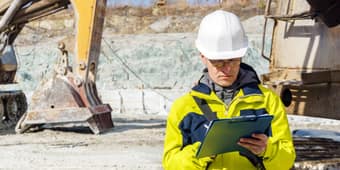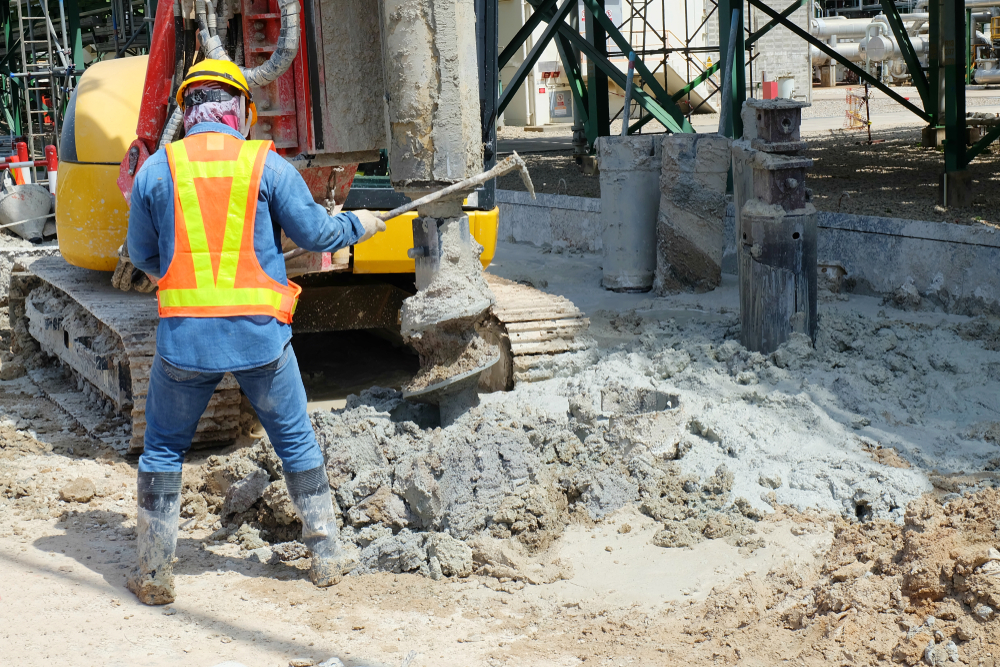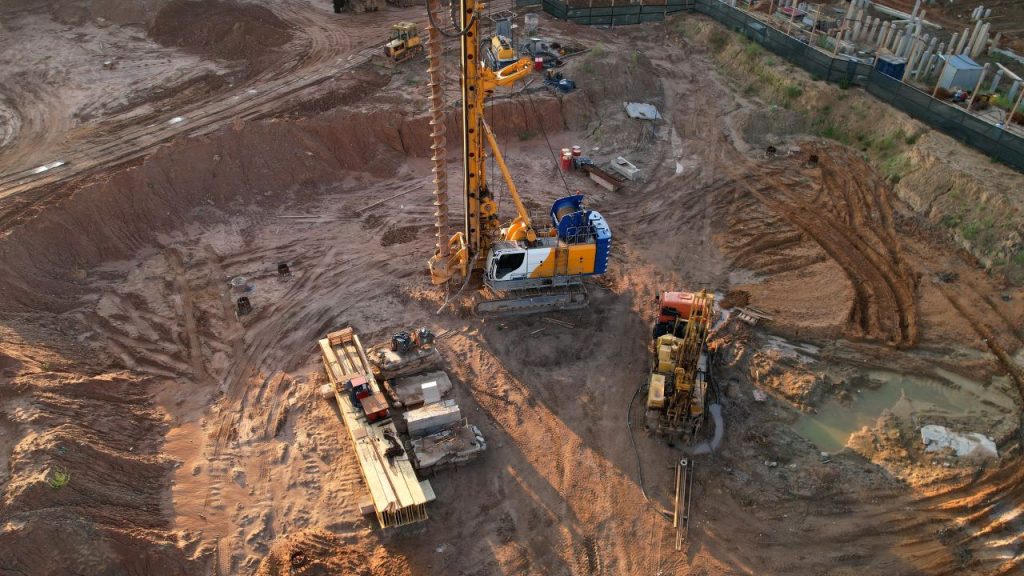Exactly How Geo Tech Engineering Sustains Large-Scale Construction Projects
Exactly How Geo Tech Engineering Sustains Large-Scale Construction Projects
Blog Article
The Crucial Payments of Geotechnical Designers in Assessing Soil Behavior and Structure Layout for Lasting Infrastructure Development
Geotechnical designers serve as a keystone in the realm of sustainable framework advancement, where their knowledge in assessing soil behavior directly influences the safety and longevity of frameworks. By using sophisticated strategies such as Standard Penetration Examinations and Cone Infiltration Testing, they diligently review dirt properties, leading to educated decisions on foundation design.
Function of Geotechnical Designers

In addition to site investigations, geotechnical designers review potential threats such as dirt liquefaction, slope stability, and groundwater problems. They apply sophisticated engineering concepts to develop remedies that mitigate these risks, making certain that styles conform with appropriate codes and standards. Their job frequently involves cooperation with various other design disciplines, engineers, and ecological scientists to create integrated techniques to framework advancement.
In addition, geotechnical engineers contribute to sustainable methods by advertising the usage of products and approaches that reduce ecological impact. With their thorough understanding of dirt mechanics and geology, they play an important function in cultivating secure, resilient, and sustainable facilities that satisfies the demands of culture while securing the environment.
Soil Actions Assessment Techniques
Comprehending dirt behavior is fundamental to educated decision-making in geotechnical engineering, as it directly influences the design and building and construction processes. Various analysis methods are employed to evaluate dirt residential or commercial properties, making sure accurate predictions of its efficiency under different loading problems.
One primary method is the Conventional Infiltration Examination (SPT), which offers understandings right into dirt thickness and consistency with the resistance encountered during penetration. In A Similar Way, Cone Penetration Screening (CPT) supplies a continuous account of dirt stratification and in-situ stamina parameters, making it possible for a more detailed understanding of subsurface conditions.
Research laboratory examinations, such as Atterberg limits, unconfined compressive stamina, and triaxial tests, are crucial for defining dirt habits under controlled conditions. These tests help with the determination of essential specifications, consisting of shear compressibility, stamina, and permeability.

Foundation Layout Concepts
Foundation style concepts are essential for ensuring the stability and durability of frameworks, as they dictate exactly how loads are sent from the superstructure to the underlying soil. These principles include various considerations, consisting of load-bearing capability, negotiation, and side security. An extensive understanding of soil technicians is vital for geotechnical engineers to review the communication in between the dirt and the foundation.
One secret principle is the ideal selection of foundation type, which might consist of superficial foundations, such as spread grounds, or deep foundations, like caissons or piles, depending upon dirt problems and structural loads - geotechnical industry. The foundation should be designed to minimize differential settlement, which can cause structural damage

Lasting Infrastructure Practices
How can we properly integrate sustainability right into infrastructure practices? Lasting facilities practices start with detailed site analyses, which examine dirt habits, regional ecosystems, and source accessibility.
Additionally, utilizing ingenious building methods, such as utilizing low-impact foundations and recycled products, significantly reduces the carbon impact of framework jobs. Geotechnical designers play a crucial role in selecting suitable products that improve sturdiness and sustainability, such as using geo-synthetics to boost soil stability and reduce erosion.
In enhancement, lasting facilities practices call for ongoing monitoring and upkeep to make sure that structures continue to be durable over time. Inevitably, these practices not only add to the durability of structures but also promote a much healthier environment, lining up framework growth with broader sustainability objectives.
Instance Research Studies and Applications
Instance studies in geotechnical engineering give beneficial insights into the useful applications of soil habits and lasting facilities techniques. One noteworthy instance is the building of the Burj Khalifa in Dubai, where extensive dirt testing and evaluation were carried out to assess the distinct difficulties presented by the area's loose sand and high water table. Geotechnical engineers employed progressed strategies such as vibrant penetrating and cone infiltration screening to determine the dirt's load-bearing capability, inevitably leading to the design of a deep foundation system that sustains this famous structure.
An additional critical instance is the remediation of the San Francisco-Oakland Bay Bridge after the 1989 Loma Prieta earthquake. Geotechnical assessments revealed the need for dirt stabilization strategies, including grouting and soil nailing, to boost the seismic durability of the structure. These interventions not just boosted the bridge's security however also added to its longevity and sustainability.
Such instance researches exemplify exactly how geotechnical engineers play an important i was reading this function in comprehending soil behavior and applying cutting-edge services to make certain the structural stability and sustainability of facilities projects. geotechnical eng. Their know-how is essential in resolving the complex tests positioned by different soil problems throughout diverse geographical locations
Final Thought
To conclude, the contributions of geotechnical engineers are crucial for the assessment of soil behavior and the style of foundations, which are necessary for sustainable facilities advancement. Through the application of sophisticated testing strategies and cutting-edge products, view these professionals make certain the stability and safety of frameworks while reducing environmental effects. The integration of sustainable techniques advertises resilience in facilities tasks, highlighting the relevance of collaboration amongst stakeholders to attain effective building remedies that meet both ecological and social needs.
Geotechnical engineers offer as a keystone in the world of lasting facilities growth, where their competence in assessing dirt actions straight affects the security and durability of structures.Geotechnical designers play an essential role in the style and building of framework by examining soil and rock behavior to make sure security and security. A thorough understanding of soil technicians is vital for geotechnical engineers to review the interaction in between the foundation and the soil.
Geotechnical assessments revealed the need for soil stablizing strategies, consisting web link of grouting and dirt nailing, to enhance the seismic durability of the foundation.In verdict, the contributions of geotechnical engineers are vital for the evaluation of soil actions and the style of foundations, which are vital for lasting infrastructure growth.
Report this page